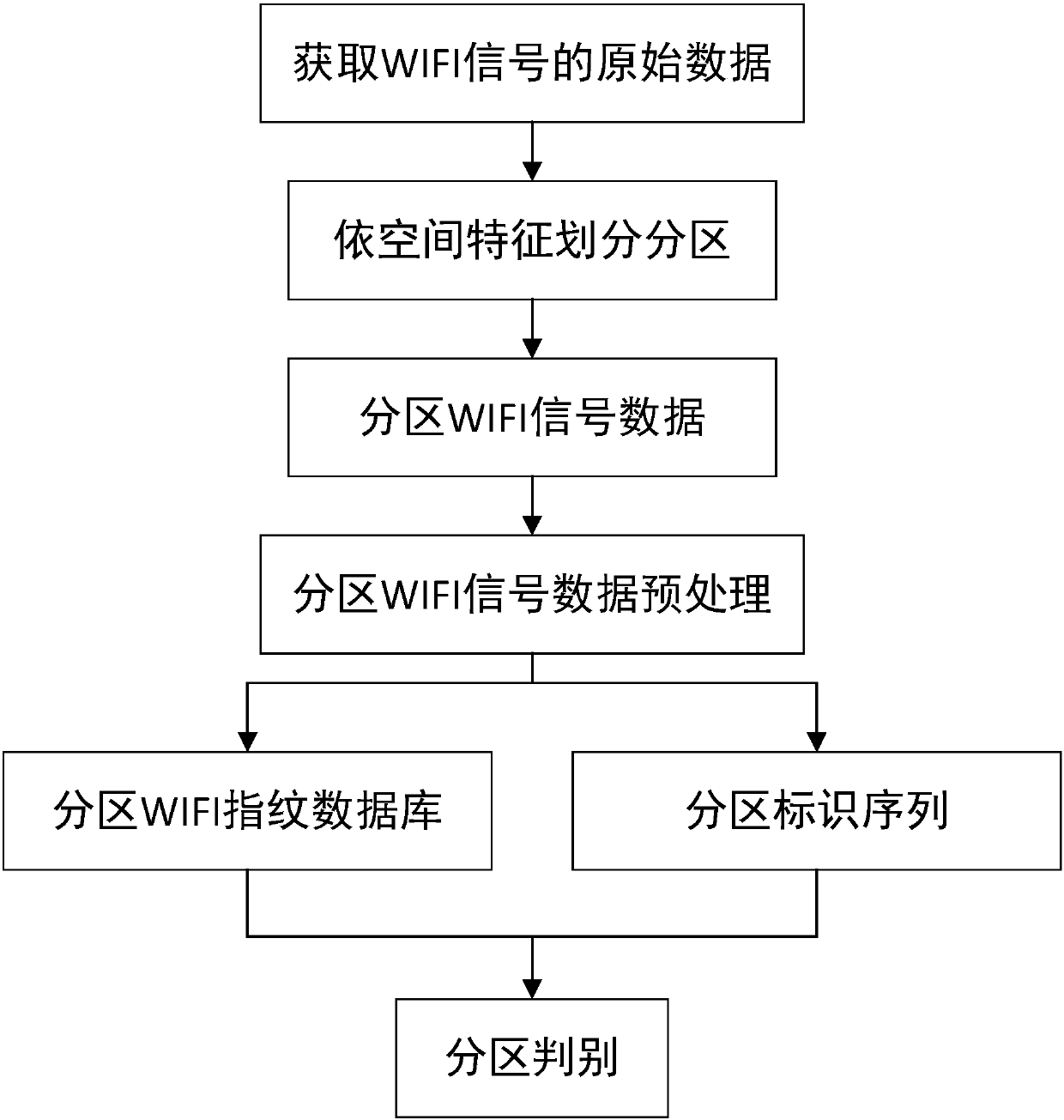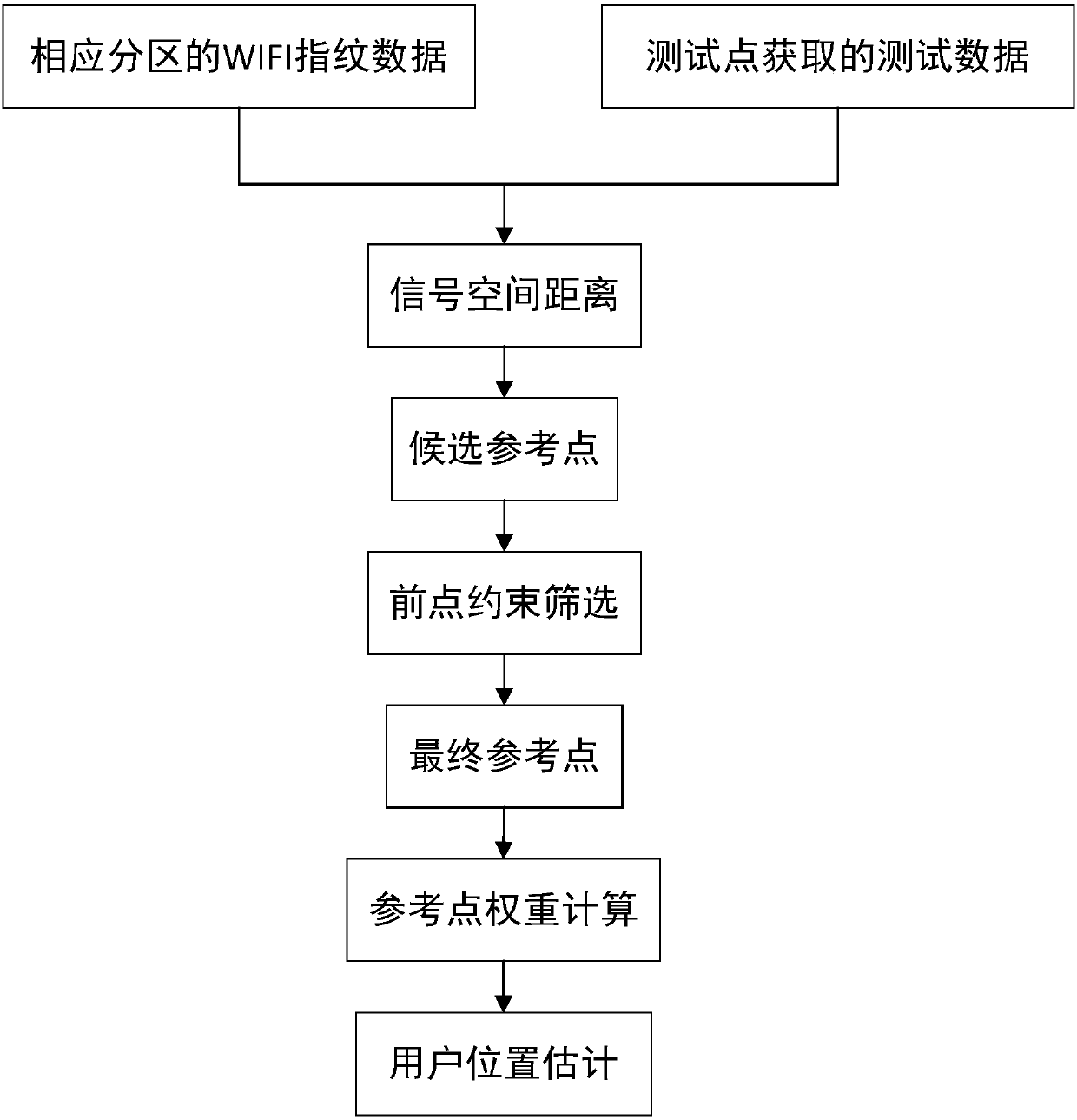WKNN indoor positioning method based on spatial feature partitioning and front point constraint
A spatial feature and indoor positioning technology, applied in positioning, transmission monitoring, measuring devices, etc., can solve problems such as narrowing the candidate range of reference points, and achieve the effect of solving indoor positioning problems, improving positioning accuracy, and narrowing the candidate range
- Summary
- Abstract
- Description
- Claims
- Application Information
AI Technical Summary
Problems solved by technology
Method used
Image
Examples
Embodiment Construction
[0098] The present invention will be described in detail below in conjunction with the accompanying drawings.
[0099] The present invention proposes a WKNN indoor positioning method based on spatial feature partitioning and previous point constraints. The flow chart of the spatial feature partitioning part is as follows figure 1 As shown, the flow chart of the part of the previous point constraint method is as follows figure 2 Shown, the method flowchart of the present invention is as image 3 shown.
[0100] The present invention is a WKNN indoor positioning method based on spatial feature partitions and previous point constraints, such as image 3 As shown, it includes the following five steps:
[0101] Step 1: Divide the partitions
[0102] Assuming that there are m reference points in the target area, the position coordinates of the i-th RP are (x i ,y i ), at which point n can be obtained i AP information, the original data of the WIFI signal is
[0103]
[0...
PUM
 Login to View More
Login to View More Abstract
Description
Claims
Application Information
 Login to View More
Login to View More - R&D
- Intellectual Property
- Life Sciences
- Materials
- Tech Scout
- Unparalleled Data Quality
- Higher Quality Content
- 60% Fewer Hallucinations
Browse by: Latest US Patents, China's latest patents, Technical Efficacy Thesaurus, Application Domain, Technology Topic, Popular Technical Reports.
© 2025 PatSnap. All rights reserved.Legal|Privacy policy|Modern Slavery Act Transparency Statement|Sitemap|About US| Contact US: help@patsnap.com



